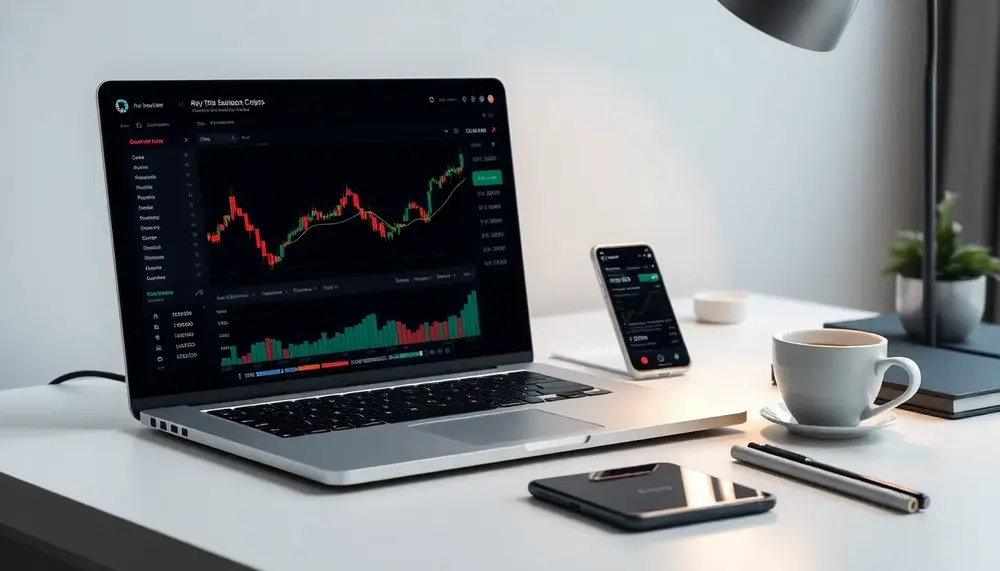Short Position
Short Position
Understanding the Short Position in Crypto Options Trading
Option trading in the world of cryptocurrencies offers unique profit-making opportunities. Against this exciting backdrop, you might come across the term "Short Position". But what does it mean exactly? Let's delve into it.
Short Position – A Basic Definition
A Short Position, or simply, 'going short', denotes the selling of a derivative, physical asset, or cryptocurrency with the aim of buying it back at a later date for a lower price. The primary objective here is to pocket the price difference as profit. This basic principle applies universally, even in the context of crypto options trading.
The Essence of a Short Position
Essentially, traders adopting a Short Position believe that the price of the asset (cryptocurrency in this case), will decline in the future. So, they sell it now to buy it back cheaper later and make a profit from this move. Remember, this strategy carries a risk. If the price spikes instead of falling, the trader would incur a loss.
Short Position in Cryptocurrency Options Trading
Options trading is a bit different from regular trading. It involves buying or selling the 'option' to purchase or sell an asset at a future date. When it comes to Short Position in crypto options trading, it involves selling an options contract. This implies that you sell the 'right to buy' (call option) or the 'right to sell' (put option) a specific cryptocurrency at a preset price within the contract's duration. Here too, the rationale is that the price of the cryptocurrency will go down, making the options contract less valuable or even worthless, allowing one to buy it back at a lower price.
Risks and Rewards of a Short Position
Embracing a Short Position in crypto options trading also comes with its share of risks and rewards. While the potential profit can be substantial if the currency's price indeed falls, the potential losses can be equally significant, or even unlimited, if the price goes up. However, using options contracts can mitigate some of these risks.
Short Position - Final Word
Developing a sound understanding of financial tools such as the Short Position is crucial to making effective trading decisions in the fast-moving world of cryptocurrencies. While the strategy can deliver substantial profits when done right, it's equally important to be aware of potential risks and take informed decisions.
Blog Posts with the term: Short Position

Bitcoin options trading provides a strategic approach to cryptocurrency investment, allowing traders the right to buy or sell Bitcoin at a predetermined price before expiration without owning the actual asset. Understanding calls and puts is crucial for navigating market volatility...

Option trading on expiry day involves heightened volatility and the potential for significant gains or losses as traders make final decisions regarding their positions. It's a critical time with specific rules, timelines, and phenomena like 'pinning' affecting market behavior; understanding...

This article provides a comprehensive guide to understanding and using the Head and Shoulders (H&S) pattern in cryptocurrency trading. It explains how to identify the pattern, interpret its significance, and make trading decisions based on its breakdown, emphasizing the importance...

Crypto options trading offers flexibility and strategic opportunities by allowing traders to speculate on cryptocurrency price movements, hedge against market volatility, and potentially maximize gains through tools like inverse options; however, it requires navigating complex mathematical concepts and analyzing real-time...

The article provides a beginner's guide to crypto options, explaining their flexibility as investment tools for hedging or speculating without owning the underlying asset and emphasizing the importance of understanding key terms like 'call' and 'put' options. It also discusses...

Option trading indicators are essential tools for analyzing market trends and making informed decisions, with different types serving various purposes such as trend identification and volatility measurement. While not foolproof, these indicators help traders predict market movements and refine their...

Option trading in Canada allows investors to buy and sell options contracts for various purposes, including income generation, hedging, or speculation. It's important for traders to understand the basics of option types, market positions, regulatory environment on exchanges like TSX...

Open interest in option trading refers to the total number of outstanding contracts that have not been settled, providing insights into market activity and liquidity. By analyzing open interest alongside price movements, traders can gauge market sentiment, confirm trends, identify...

Option trading involves contracts that give the right but not the obligation to buy or sell an asset at a strike price, offering strategies like speculation, income generation, and hedging. Futures trading obligates buying or selling assets in the future...

Exit timing in option trading is crucial for maximizing gains or minimizing losses, influenced by factors like market volatility, time decay, and liquidity. Traders must establish a clear exit strategy before entering a trade and adhere to it despite emotional...

Bitcoin options trading offers investors the ability to manage risk or speculate on Bitcoin's future prices through contracts that allow buying or selling at predetermined prices within a set timeframe. Advanced analytics enhance strategic decision-making in this volatile market by...

Option trading in Germany offers investors the opportunity to diversify their portfolios and manage larger assets with less capital, using regulated exchanges for transparency. Traders can use options for hedging, speculation, or income generation by understanding market indicators and terminologies;...

TD Ameritrade does not offer direct Bitcoin options but provides access to Bitcoin futures and micro Bitcoin futures via CME, allowing traders to speculate on price movements without owning the cryptocurrency. To trade these derivatives effectively, users must prepare their...

Bitcoin strike options offer a beginner-friendly, low-risk way to trade Bitcoin by predicting price movements above or below a specific level with capped losses. They simplify trading decisions, provide flexibility through long and short positions, and allow users to profit...
